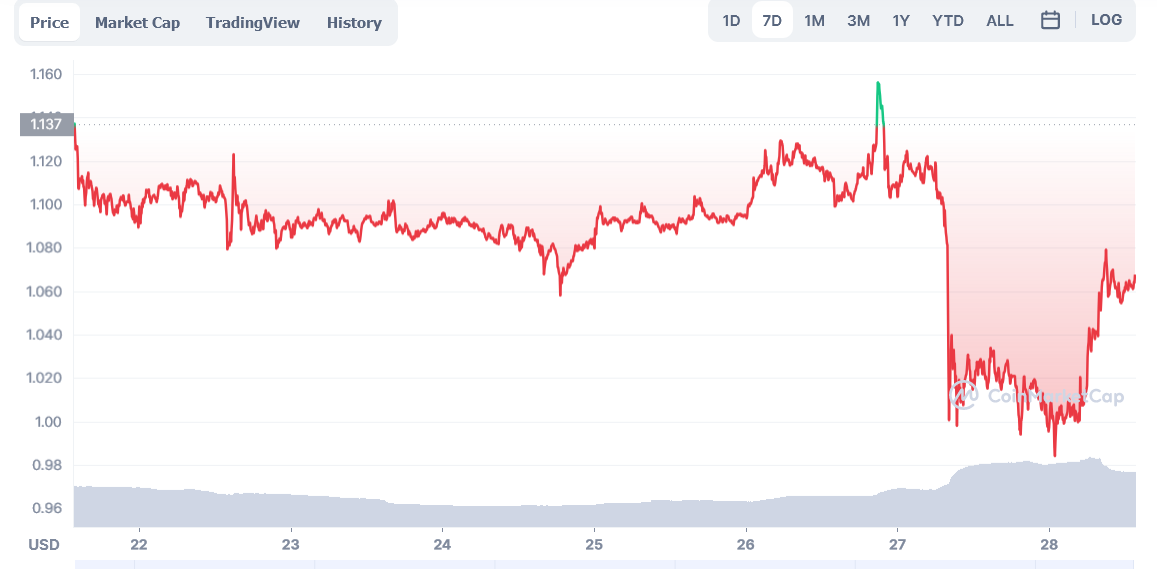If you’ve been living under a rock lately, you might have missed the buzz around blockchain technology. It’s not just some techie fad: it’s revolutionizing the way we think about data security and transactions. In a world where securing information can feel as elusive as finding a needle in a haystack, blockchain offers a ray of hope. From finance to healthcare, the implications of this technology are as vast as they are thrilling. Buckle up, because this is your comprehensive guide to everything you need to know about the blockchain, served up with a side of wit.
theblockchainbrief .com

Key Features of Blockchain
Blockchain technology stands out for its unique features. At its core, blockchain is a decentralized digital ledger that records transactions across many computers. This means that once information is recorded, it cannot be easily altered. The pivotal features of blockchain include immutability, transparency, and security. Immutability ensures that transactions are final and cannot be tampered with, giving users peace of mind. Transparency, on the other hand, allows all participants in the network to verify transactions independently, while security combats fraud through cryptographic techniques.Types of Blockchain Networks
When it comes to types of blockchain networks, they generally fall into three categories: public, private, and consortium. Public blockchains are open to anyone and are decentralized, like Bitcoin. Private blockchains, as the name suggests, are limited to select participants, often used by companies to enhance privacy in their transactions. Consortium blockchains are a blend of both, managed by a group of organizations. Each type serves different purposes, making it essential to choose wisely based on the intended use case.Applications of Blockchain in Various Industries
Impact on Finance and Banking
One of the most well-known applications of blockchain is in finance and banking. Traditional banking often comes with high fees and slow processing times. Bitcoin and other cryptocurrencies leverage blockchain technology to create a decentralized financial system that facilitates quicker and cheaper transactions. Also, banks are exploring how blockchain can enhance cross-border payments, making them faster and less expensive. The use of smart contracts is also on the rise, allowing automated transactions based on predefined conditions, completely bypassing the need for intermediaries.Blockchain in Supply Chain Management
Blockchain is making waves in supply chain management as well. By providing a transparent and immutable record of every step in a product’s journey, businesses can keep tabs on their goods from origin to consumer. This not only enhances accountability but also helps in tracking and managing recalls more efficiently. When companies can assure consumers of the authenticity and sourcing of their products, trust in brands is amplified.The Role of Blockchain in Healthcare
In healthcare, securing patient data is paramount. Blockchain technology can provide a secure platform for sharing medical records, giving patients control over who accesses their personal information. Besides, it simplifies verifying the authenticity of medicines, particularly in combating counterfeit drugs. The potential for improved communication among stakeholders in healthcare, from patients to providers, is invaluable.Current Trends and Developments in Blockchain
Decentralized Finance (DeFi) Innovations
Decentralized finance, or DeFi, is one of the most exciting trends in the blockchain space today. It eliminates intermediaries in financial transactions, offering a suite of financial services like lending, borrowing, and trading directly on the blockchain. With the rise of platforms providing DeFi services, users can engage in financial activities globally without traditional banking barriers. This has opened doors for everyone, making finance accessible to a broader audience.Non-Fungible Tokens (NFTs) Growth
Another significant trend is the growth of non-fungible tokens (NFTs). These unique digital assets, verified on the blockchain, have transformed how we think about ownership as it applies to art, music, and collectibles. As industries like gaming and entertainment embrace NFTs, they bring new revenue opportunities for creators and enhance user engagement. The potential for NFT marketplaces is vast, reflecting a shift in how we perceive digital ownership.Challenges and Opportunities in Blockchain Adoption
Scalability and Performance Issues
Even though its promise, blockchain technology faces challenges, particularly about scalability. As more transactions flood networks, it can lead to slower processing and higher fees, which dampens user experience. Developers are racing against the clock to find solutions that enhance scalability without sacrificing security. Layer 2 technologies and sharding are some potential solutions aimed at increasing the performance of blockchain networks.Regulatory Landscape and Compliance
Regulatory issues pose another significant challenge. As governments grapple with regulations surrounding cryptocurrencies and blockchain technology, organizations must navigate a tricky path to ensure compliance. Adapting to changing regulations can be difficult but is crucial for long-term success. Collaboration between the blockchain community and regulators can pave the way for a clearer, more stable environment.Wordsmith Extraordinaire: If you’ve ever read an article on our site and thought, “Hey, this makes sense,” you’ve got Sam to thank for that. With a talent for translating “crypto-speak” into human language, Sam’s writing keeps our readers coming back for more.



